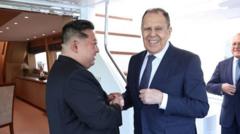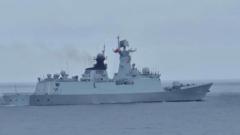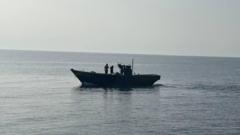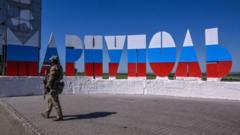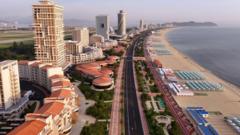As North Korea navigates challenges in military modernization, the regime uses incidents to cement power and reshape propaganda narratives.
**Resilience at Sea: North Korea's Warship Incident Illuminates Regime Dynamics**
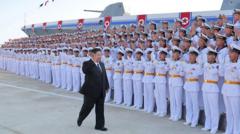
**Resilience at Sea: North Korea's Warship Incident Illuminates Regime Dynamics**
Analyzing the capsizing and relaunching of a North Korean warship reveals insights into Kim Jong Un's regime and ideological strategies.
In a notable incident last month, North Korea's new warship capsized during its launch, attracting significant international attention despite the absence of serious casualties. The event was not merely a maritime failure; it provided a lens into the dynamics of Kim Jong Un's regime. Following the mishap, Kim denounced the failure as "a criminal act" that harmed the nation's dignity, and he ordered swift repairs alongside severe penalties for those responsible, resulting in the arrest of four party officials.
This incident underscores North Korea's commitment to enhancing its naval capabilities, a crucial aspect of Kim's military agenda. Despite an existing nuclear arsenal, the country’s maritime strength is significantly lagging compared to adversaries like the United States and South Korea. Kim's ambitions include developing a nuclear-capable navy, with the warship being one of two destroyers initiated in the last year.
Experts note that a destroyer capsizing during launch is a rare event, indicating potential shortcomings in North Korea’s shipbuilding technology. Kim, who witnessed the launch alongside a crowd, faced embarrassment as the flagship project faltered. This prompted a valuable shift in propaganda approach; rather than mask the incident, the regime publicized it as part of a broader narrative of accountability and problem-solving.
Rachel Minyoung Lee, a North Korean propaganda analyst, highlights a shift from the regime's traditional secrecy towards acknowledging failures. This evolving strategy aims to bolster public confidence by showcasing a responsive government that holds individuals accountable for failures. Following the incident, the warship underwent swift repairs, solidifying a perception of resilience against adversity.
Kim's response also serves a dual purpose; beyond restoring the ship, it enables him to cultivate loyalty to the regime by framing the accident as a cautionary tale about responsibility and dedication, exemplified by the posthumous honor given to a deceased worker from the construction team.
While the situation may induce skepticism regarding North Korea's technological prowess, analysts warn against underestimating the regime’s advancements. The rapid repair and relaunch serve as a testament to their determination, suggesting that North Korea is incrementally expanding its naval capabilities to project power on a global scale. Moving forward, experts emphasize the importance of vigilance in light of Kim's ambitions to redefine the North Korean navy as a formidable force capable of conducting broader operations beyond its territorial waters.


